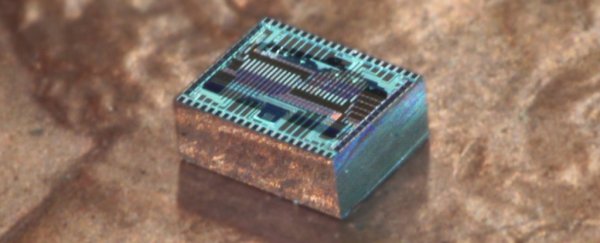Engineers have developed a type of camera that doesn't require any lenses. They're replacing curved glass with something that does the same job computationally – an ultra-thin optical phased array.
Researchers hope that the findings could turn a wide range of flat surfaces into image collectors.
To capture the perfect selfie or Instagram photo, cameras use lenses. In digital cameras, the lenses are used to focus the light on to a digital sensor. The optical phased array has a group of light receivers that adds a minute delay to the light as it is captured. This allows the camera to switch focus and look in different directions using nothing but electronic trickery.
"Here, like most other things in life, timing is everything," said Ali Hajimiri from Caltech. "With our new system, you can selectively look in a desired direction and at a very small part of the picture in front of you at any given time, by controlling the timing with femto-second – quadrillionth of a second – precision."
Phased arrays have been proposed by SpaceX and Google as the answer to providing earth with super-fast internet. They work by using a selection of stationary transmitters sending out the same signal.
The signals from neighbouring transmitters interfere with each other. In some areas that cancels out the signal and in other areas that amplifies it. By adding a small delay to some of the transmitters the focus of the amplified signal can be moved around – electronically steering the signal.
 Phased array imaging / Wikimedia
Phased array imaging / Wikimedia
The camera reported in this new study uses the same principles, just in reverse.
The lensless camera is made from thin light sensitive silicon components integrated on a silicon chip. Light waves are received by each light sensitive element in the array and destructively interfere from all but one of the directions. In that direction, the waves amplify each other to create a focused "gaze" that can be electronically controlled.
"What the camera does is similar to looking through a thin straw and scanning it across the field of view. We can form an image at an incredibly fast speed by manipulating the light instead of moving a mechanical object," says lead researcher Reza Fatemi.
Don't get too excited just yet, the current version is more of a proof of concept. It consists of 64 light receivers in an eight by eight pixel array and the images it creates are a world away from what is currently captured by your smart phone.
The researchers hope that, over time, further optimisation of this proof of concept camera could really shake up camera technology.
"The applications are endless," says Behrooz Abiri, another member of the research team. "Even in today's smartphones, the camera is the component that limits how thin your phone can get. Once scaled up, this technology can make lenses and thick cameras obsolete."
Future studies will focus on scaling up the camera by designing chips that combine a much larger number of receivers creating a higher resolution image and greater sensitivity. Because the camera is really thin, we may even see the technology used in some strange places.
"The ability to control all the optical properties of a camera electronically using a paper-thin layer of low-cost silicon photonics without any mechanical movement, lenses, or mirrors, opens a new world of imagers that could look like wallpaper, blinds, or even wearable fabric," says Hajimiri.
The research published in OSA Technical Digest.
Here is a video showing how the camera works:
